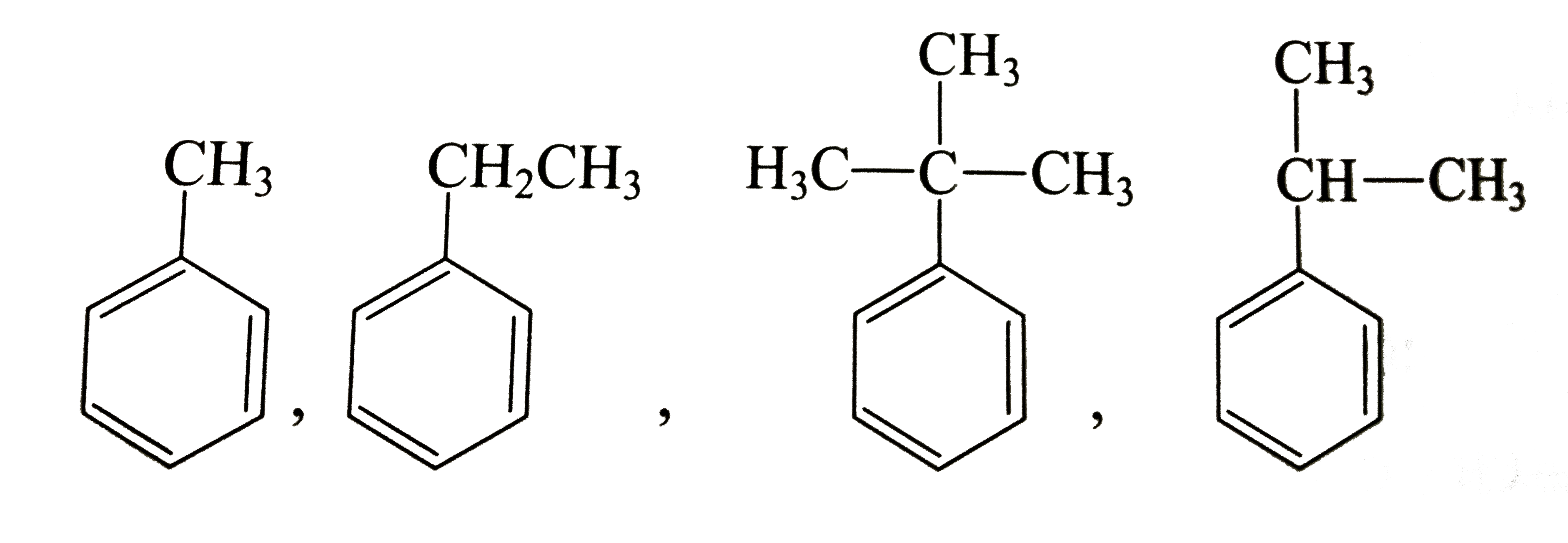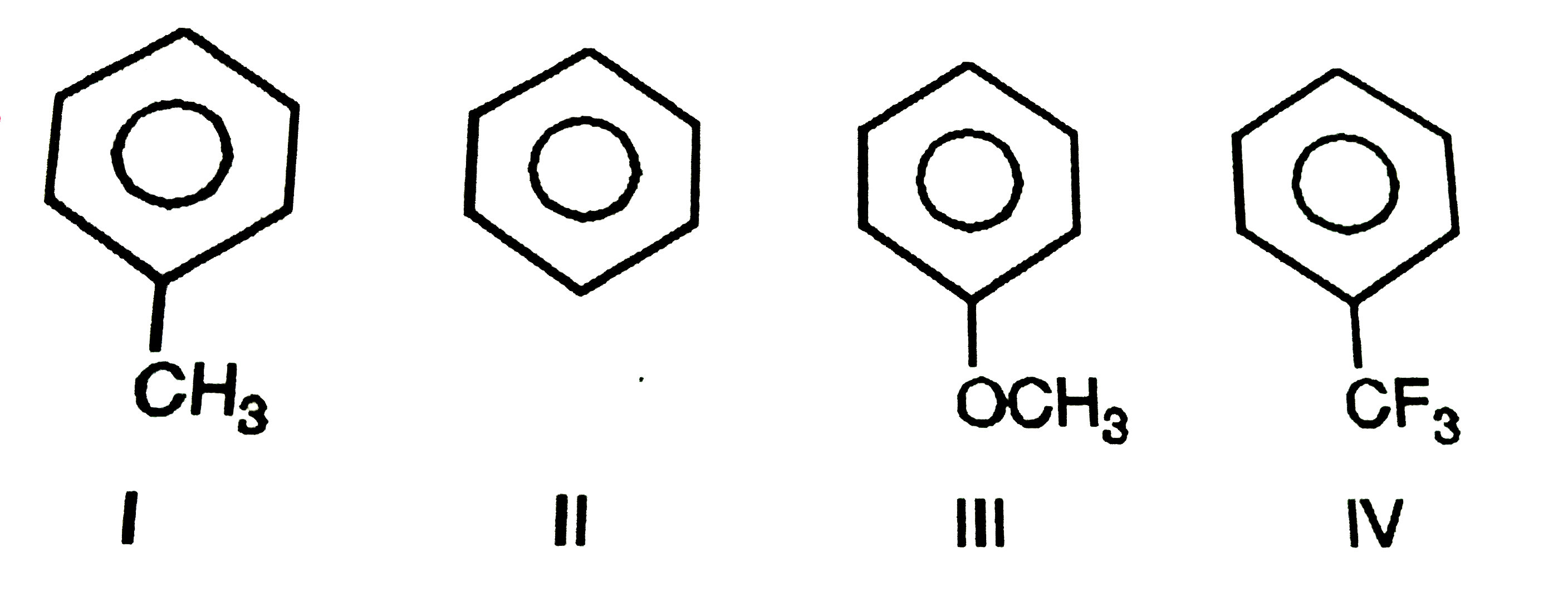Arrange reactivity of given compounds in decreasing order for electrophilic substitution reaction
1. Furan
2. Pyrrole
3. Thiophene
1,2,3
2,1,3
2,3,1
3,2,1
The correct Answer is:B
To determine the reactivity of furan, pyrrole, and thiophene in electrophilic substitution reactions, we need to analyze the structures and the stability of the intermediates formed during these reactions.
1. Identify the Compounds and Their Structures:
- Furan: A five-membered ring containing one oxygen atom.
- Pyrrole: A five-membered ring containing one nitrogen atom.
- Thiophene: A five-membered ring containing one sulfur atom.
2. Consider the Electrophilic Substitution Mechanism:
- In electrophilic substitution, an electrophile attacks the aromatic ring, leading to the formation of a positively charged intermediate (sigma complex).
- The stability of this intermediate is crucial for the reactivity of the compound.
3. Analyze the Role of Heteroatoms:
- Furan: The oxygen atom is highly electronegative and cannot stabilize a positive charge effectively. Thus, the positive charge that develops during the reaction will make furan less reactive.
- Pyrrole: The nitrogen atom can stabilize the positive charge due to its lone pair of electrons. This makes pyrrole more reactive than furan.
- Thiophene: The sulfur atom has 3d orbitals that can help delocalize the positive charge, but it is less effective than nitrogen in stabilizing the charge. However, thiophene is still more reactive than furan.
4. Compare Reactivity:
- Furan: Least reactive due to poor stabilization of the positive charge.
- Thiophene: More reactive than furan but less than pyrrole due to the limited ability of sulfur to stabilize the positive charge.
- Pyrrole: Most reactive due to effective stabilization of the positive charge by nitrogen.
5. Final Order of Reactivity:
- The decreasing order of reactivity for electrophilic substitution reactions is:
1. Pyrrole (most reactive)
2. Thiophene
3. Furan (least reactive)
Final Answer:
Pyrrole > Thiophene > Furan
- Furan: A five-membered ring containing one oxygen atom.
- Pyrrole: A five-membered ring containing one nitrogen atom.
- Thiophene: A five-membered ring containing one sulfur atom.
- In electrophilic substitution, an electrophile attacks the aromatic ring, leading to the formation of a positively charged intermediate (sigma complex).
- The stability of this intermediate is crucial for the reactivity of the compound.
- Furan: The oxygen atom is highly electronegative and cannot stabilize a positive charge effectively. Thus, the positive charge that develops during the reaction will make furan less reactive.
- Pyrrole: The nitrogen atom can stabilize the positive charge due to its lone pair of electrons. This makes pyrrole more reactive than furan.
- Thiophene: The sulfur atom has 3d orbitals that can help delocalize the positive charge, but it is less effective than nitrogen in stabilizing the charge. However, thiophene is still more reactive than furan.
- Furan: Least reactive due to poor stabilization of the positive charge.
- Thiophene: More reactive than furan but less than pyrrole due to the limited ability of sulfur to stabilize the positive charge.
- Pyrrole: Most reactive due to effective stabilization of the positive charge by nitrogen.
- The decreasing order of reactivity for electrophilic substitution reactions is:
1. Pyrrole (most reactive)
2. Thiophene
3. Furan (least reactive)
Pyrrole > Thiophene > Furan
Topper's Solved these Questions
Similar Questions
Knowledge Check
Correct order of electrophilic substitution reaction is :
 Aa>b>c>dBd>b>a>cCb>a>c>dDb>a>d>c
Aa>b>c>dBd>b>a>cCb>a>c>dDb>a>d>cOrder of rate of electrophilic substitution reaction is :
 A1>2>3>4B4>3>2>1C2>1>4>3D2>1>3>4
A1>2>3>4B4>3>2>1C2>1>4>3D2>1>3>4Arrange following compounds in decreasing order of rate of electrophilic substitution.
 Ai>ii>iii>ivBiii>iv>ii>iCi>iv>ii>iiiDi>ii>iv>iii
Ai>ii>iii>ivBiii>iv>ii>iCi>iv>ii>iiiDi>ii>iv>iii
Arrange the following in decreasing order of reactivity towards electrophilic substitution:

View Solution
The correct arrangement for decreasing order of electrophilic substitution reactions .
View SolutionArrange these compounds in decreasing order of reactivity for the nucleophilic addition reaction.
View SolutionThe most reactive compound in electrophilic substitution reaction is
View SolutionThe most reactive compound towards electrophilic substitution reaction is
View Solution

